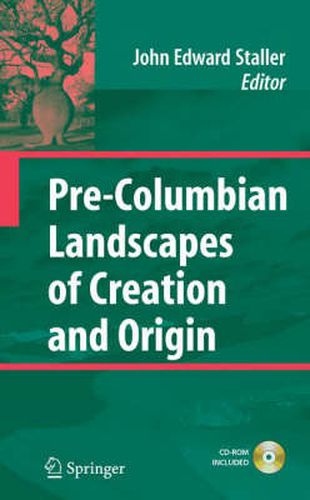Readings Newsletter
Become a Readings Member to make your shopping experience even easier.
Sign in or sign up for free!
You’re not far away from qualifying for FREE standard shipping within Australia
You’ve qualified for FREE standard shipping within Australia
The cart is loading…






This title is printed to order. This book may have been self-published. If so, we cannot guarantee the quality of the content. In the main most books will have gone through the editing process however some may not. We therefore suggest that you be aware of this before ordering this book. If in doubt check either the author or publisher’s details as we are unable to accept any returns unless they are faulty. Please contact us if you have any questions.
Pre-Columbian Andean and Mesoamerican cultures have inspired a special fascination among historians, anthropologists, archaeologists, as well as the general public. As two of the earliest known and studied civilizations, their origin and creation mythologies hold a special interest. The existing and Pre-Columbian cultures from these regions are particularly known for having a strong connection with the natural landscape, and weaving it into their mythologies. A landscape approach to archaeology in these areas is uniquely useful shedding insight into their cultural beliefs, practices, and values. The ways in which these cultures imbued their landscape with symbolic significance influenced the settlement of the population, the construction of monuments, as well as their rituals and practices.
This edited volume combines research on Pre-Columbian cultures throughout Mesoamerica and South America, examining their constructed monuments and ritual practices. It explores the foundations of these cultures, through both the creation mythologies of ancient societies as well as the tangible results of those beliefs. It offers insight on specific case studies, combining evidence from the archaeological record with sacred texts and ethnohistoric accounts. The patterns developed throughout this work shed insight on the effect that perceived sacredness can have on the development of culture and society.
This comprehensive and much-needed work will be of interest to archaeologists and anthropologists focused on Pre-Columbian studies, as well as those in the fields of cultural or religious studies with a broader geographic focus.
$9.00 standard shipping within Australia
FREE standard shipping within Australia for orders over $100.00
Express & International shipping calculated at checkout
This title is printed to order. This book may have been self-published. If so, we cannot guarantee the quality of the content. In the main most books will have gone through the editing process however some may not. We therefore suggest that you be aware of this before ordering this book. If in doubt check either the author or publisher’s details as we are unable to accept any returns unless they are faulty. Please contact us if you have any questions.
Pre-Columbian Andean and Mesoamerican cultures have inspired a special fascination among historians, anthropologists, archaeologists, as well as the general public. As two of the earliest known and studied civilizations, their origin and creation mythologies hold a special interest. The existing and Pre-Columbian cultures from these regions are particularly known for having a strong connection with the natural landscape, and weaving it into their mythologies. A landscape approach to archaeology in these areas is uniquely useful shedding insight into their cultural beliefs, practices, and values. The ways in which these cultures imbued their landscape with symbolic significance influenced the settlement of the population, the construction of monuments, as well as their rituals and practices.
This edited volume combines research on Pre-Columbian cultures throughout Mesoamerica and South America, examining their constructed monuments and ritual practices. It explores the foundations of these cultures, through both the creation mythologies of ancient societies as well as the tangible results of those beliefs. It offers insight on specific case studies, combining evidence from the archaeological record with sacred texts and ethnohistoric accounts. The patterns developed throughout this work shed insight on the effect that perceived sacredness can have on the development of culture and society.
This comprehensive and much-needed work will be of interest to archaeologists and anthropologists focused on Pre-Columbian studies, as well as those in the fields of cultural or religious studies with a broader geographic focus.